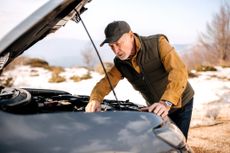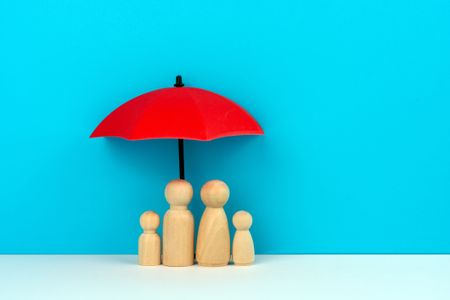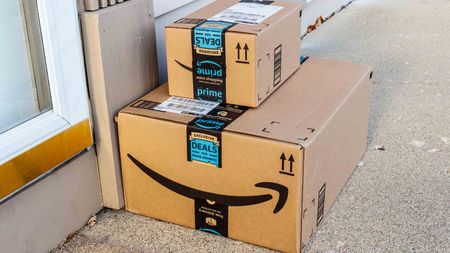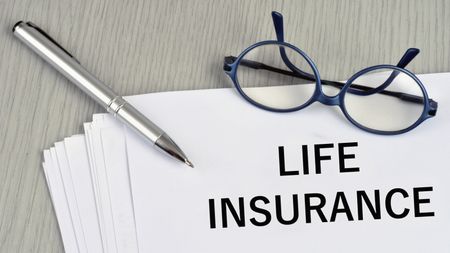Cash in on Lower Interest Rates
Borrowers with stellar credit will grab the best deals on mortgages, credit cards and car loans.
Kate Mauldin is a newlywed with a soft spot for Ben Bernanke. Thanks to the Federal Reserve chairman's recent moves to cut interest rates, Mauldin sees a golden opportunity to buy a larger home and pay down credit-card debt.
| Row 0 - Cell 0 | Search for Low Interst Credit Cards |
| Row 1 - Cell 0 | Compare Car Offers |
| Row 2 - Cell 0 | Check Current Rates |
The prime rate -- the rate lenders give their most creditworthy customers -- dropped from 7.25% on January 1 to 6% on February 8. As a result, Mauldin and other borrowers who have top-notch credit can expect better deals on auto loans, credit cards, home-equity lines of credit and mortgages. To qualify, you don't need a perfect credit score (850 on the FICO scale, the most commonly used score). Borrowers with a score of 720 or better will be able to find bargains. And people who have a score of 760 or higher, like Mauldin, will qualify for the best rates.
If you have a variable-rate credit card or an adjustable-rate mortgage that's tied to the prime rate, you'll benefit automatically from lower rates -- eventually. In other cases, you may have to negotiate with your lender or troll the Internet to find a better deal. Good deals are harder to come by with savings. Interest-rate cuts hurt yields on savings accounts and certificates of deposit. But it still makes sense to boost your cash holdings in times of economic uncertainty.

Sign up for Kiplinger’s Free E-Newsletters
Profit and prosper with the best of expert advice on investing, taxes, retirement, personal finance and more - straight to your e-mail.
Profit and prosper with the best of expert advice - straight to your e-mail.
Mortgages: Go for It
At 5.67% in February (plus an average 0.4 percentage point), the average rate for a 30-year fixed-rate mortgage was near a four-year low. A year ago, the rate stood at more than 6%.
That decline leaves Mauldin, 33, who manages a nonprofit clinic, itching to sell her 1,200-square-foot home in Raleigh, N.C., in which she has built up $95,000 in equity. She hopes to upgrade to bigger digs in nearby Durham with her husband, Matthew Barton, and their two dogs, Mavis and Poncho. "We can get twice the house for the same money in Durham," Mauldin says. "If we sell, we can pay off our debt immediately and have enough for a 20% down payment."
Despite tightened lending standards, home buyers are still calling the shots. That's especially true if you don't have to worry about selling a house in a down market, you can come up with a 20% down payment, and you plan to live in the house for at least five years (time enough to recover your costs and wait for a rebound in home prices).
Don't expect to get 100% financing. Banks require at least 5% down -- 10% in markets with declining home values, such as California, Florida and Nevada. Even as sales and home values drop nationwide, Mauldin expects her Raleigh home to hold its value. She says houses in her neighborhood continue to sell at reasonable prices.
If you're in the market for a house, it's foolhardy to wait for a slightly better deal on mortgage rates. Thirty-year mortgages aren't closely tied to the short-term rates over which the Fed has the most control. What moves fixed-rate mortgages is a change in long-term interest rates, such as the rate on ten-year U.S. Treasury notes. Even if short-term rates continue to fall, Kiplinger's expects the yield on ten-year Treasuries (recently 3.6%) to rise to 4.0% by midyear.
In addition, mortgage rates are influenced by factors such as inflation expectations, investors seeking shelter from the volatility of stocks and conditions in the credit markets. It's smart to take advantage of a low rate now rather than wait for something better to come along.
[page break]
The interest-rate decline for fixed-rate loans is also good news for home-owners who want to refinance, especially if you have a reset on an adjustable-rate loan looming. And thanks to the Fed's move, that adjustment is likely to be less painful.
But borrowers who want a jumbo mortgage, which is a home loan of more than $417,000, will have a tougher time finding deals. In mid February, jumbo-mortgage rates were 0.9 percentage point higher than rates on 30-year fixed mortgages of $417,000 or less. That's because Fannie Mae and Freddie Mac -- government-sponsored agencies that purchase and package mortgages and issue them to investors in the form of bonds -- weren't permitted to buy home loans issued for more than that amount.
| Row 0 - Cell 0 | Search for Low Interst Credit Cards |
| Row 1 - Cell 0 | Compare Car Offers |
| Row 2 - Cell 0 | Check Current Rates |
The economic-stimulus package passed by Congress raises the limit to as high as $729,750 in expensive real estate markets. Because banks can now repackage larger loans and sell them to Fannie Mae or Freddie Mac, they may begin to offer lower rates on some jumbo loans. That could cause rates to fall to the normal spread of 0.2 to 0.25 percentage point higher than the rate on smaller loans. But lenders may levy higher fees to make up for the additional risk they are taking on. In any case, you'll have to act fast to lock in lower jumbo rates because the higher limits for Fannie Mae and Freddie Mac last only until December 31.
There's good news if you have a home-equity line of credit (HELOC) that you can borrow against over time. More than 80% of HELOCs are pegged to the prime rate; lenders typically add one to three percentage points to the prime to come up with the rate they charge. Those rates have fallen as the prime has declined.
But fixed-rate home-equity loans aren't affected by changes in the prime rate. Even as the Fed has cut interest rates, the average rate on second mortgages has hovered around 8% for the past six months, according to Bankrate.com.
Credit cards: Negotiate
If you have a credit card with a variable interest rate, you're already reaping the benefits of falling rates. The average for variable-rate cards has dropped from 14% in September to just over 13%, reports Bankrate.com. But lower rates may take up to three months to appear on your statement. If you don't notice a difference, don't hesitate to get on the phone and ask your issuer to speed things up.
Fixed-rate cards are trickier. Card issuers are under no obligation to lower the interest rate -- and they haven't. Despite the Fed's actions, average rates on fixed-rate cards have crept slightly higher over the past year.
But that won't stop issuers from offering 0% introductory rates to attract new customers with good credit, says Scott Bilker, founder of Debt-Smart.com. Introductory rates typically cover balance transfers and last 12 to 18 months.
Mauldin might take a 0% offer and transfer her balances if her plan to move to Durham is foiled by the real estate market. "If my house doesn't fetch my asking price and we stay put, then our next goal is paying off debt," she says.
A 0% card is an affordable way to do that as long as you are able to eliminate your balance before the interest-free offer expires. To be safe, choose the card that offers the best rate after the 0% introductory period ends (for a list of 0% deals, visit Cardoffers.com).
If you're reluctant to sign up for a new credit card, use those 0% offers as leverage to negotiate better terms on the cards you have. "You're going to get the best offers from your existing credit-card companies because they don't want to lose you, especially if you've been a good customer in the past," says Bilker.
Cars: Target Incentives
The Fed's interest-rate moves will eventually trickle down to car loans and financing incentives offered by automakers. But those deals will target buyers with good credit, says Jesse Toprak, of Edmunds.com.
Those incentives will be doled out selectively, usually by domestic manufacturers and on models that aren't top sellers. For example, you might get a break on a slow-selling large SUV, but not on a popular new model, a sexy import or a hybrid. And banks and other lenders that are tightening credit standards in response to loan losses won't be in any rush to cut rates on car loans.Even if they did, those cuts probably wouldn't be deep enough for you to afford to upgrade your ride. Falling interest rates don't have a big impact on car loans because the balance is repaid over a relatively short time. If you borrowed, say, $25,000, an interest-rate difference of even one full percentage point on a five-year car loan would save you just $12 per month.
Savings: Shop for Yield
With the economy slowing (if not sliding into a recession), it makes sense to stash your cash where you can easily get your hands on it in case you need it -- or if you want to take advantage of buying opportunities in the stock market (see "How to Protect Your Money Now," on page 37). Mauldin and Barton, for example, have socked away two months of living expenses in a money-market account, and they're shooting for an emergency fund that covers six months of expenses.
Although falling interest rates may be good news for borrowers, it's a different story for savers. From January 18 to February 11, for example, the average rate on a one-year certificate of deposit fell from 4.19% to 3.28%, according to Bankrate.com. During the same period, ING Direct shaved its rate for high-yield savings accounts from 3.65% to the current 3.40%, and HSBC Direct's rates on savings accounts dipped from 4.25% to 3.80%.
Nevertheless, some banks are slow to cut yields because they want to attract more consumer deposits. It's cheaper for those banks to pay a higher-than-average rate on a CD or savings account than to raise funds in the credit markets, says Greg McBride, senior analyst with Bankrate.com. For example, GMAC Bank offers a one-year CD that yields 3.50%. Or you can earn 4.40% with an online savings account from E*Trade Bank.
Most high-yield savings accounts let you squirrel away money automatically by setting up a monthly deduction from a checking account. Automatic savings plans, through either payroll deduction or your bank, give you a painless way to build a bigger cash cushion.
And you can get help from the tax man, too. The IRS will deposit your tax refund into as many as three accounts. You could divvy up your money among, say, your 2008 IRA contribution, a deposit in your checking account to pay your Visa bill, and a high-yield online savings account.
Even better than getting a tax refund is putting your money to work throughout the year. You may be able to decrease the taxes withheld from your paycheck and put more money in your pocket -- or into a savings account -- by filing a new Form W-4 to make sure you're claiming all the withholding allowances you're entitled to. Each allowance basically makes $3,500 of your annual income off limits for withholding. To figure out how many allowances to claim, use our handy tax-withholding calculator.
Get Kiplinger Today newsletter — free
Profit and prosper with the best of Kiplinger's advice on investing, taxes, retirement, personal finance and much more. Delivered daily. Enter your email in the box and click Sign Me Up.
-
 Stock Market Today: Dow Rises 854 Points From Its Intraday Low
Stock Market Today: Dow Rises 854 Points From Its Intraday LowIf there's one thing markets hate, it's uncertainty. But uncertainty is all they're getting these days.
By David Dittman Published
-
 Are You a Retirement Millionaire Too Scared To Spend?
Are You a Retirement Millionaire Too Scared To Spend?If you are too scared to spend money in retirement, you may be saddled with regret. Here are three ways to safely enjoy your sizable retirement nest egg.
By Donna Fuscaldo Published
-
 Roth IRA Contribution Limits for 2025
Roth IRA Contribution Limits for 2025Roth IRAs Roth IRA contribution limits have gone up. Here's what you need to know.
By Jackie Stewart Last updated
-
 Four Tips for Renting Out Your Home on Airbnb
Four Tips for Renting Out Your Home on Airbnbreal estate Here's what you should know before listing your home on Airbnb.
By Miriam Cross Published
-
 Five Ways to a Cheap Last-Minute Vacation
Five Ways to a Cheap Last-Minute VacationTravel It is possible to pull off a cheap last-minute vacation. Here are some tips to make it happen.
By Vaishali Varu Last updated
-
 How to Figure Out How Much Life Insurance You Need
How to Figure Out How Much Life Insurance You Needinsurance Instead of relying on rules of thumb, you’re better off taking a systematic approach to figuring your life insurance needs.
By Kimberly Lankford Last updated
-
 Amazon Big Deal Days Is Coming! We’ve Got All the Details
Amazon Big Deal Days Is Coming! We’ve Got All the DetailsAmazon Prime To kick off the holiday season with a bang, Amazon Big Deal Days runs Tuesday, October 8 and Wednesday, October 9.
By Bob Niedt Last updated
-
 How to Shop for Life Insurance in 3 Easy Steps
How to Shop for Life Insurance in 3 Easy Stepsinsurance Shopping for life insurance? You may be able to estimate how much you need online, but that's just the start of your search.
By Kaitlin Pitsker Last updated
-
 Five Ways to Shop for a Low Mortgage Rate
Five Ways to Shop for a Low Mortgage RateBecoming a Homeowner Mortgage rates are high this year, but you can still find an affordable loan with these tips.
By Daniel Bortz Last updated
-
 Retirees, It's Not Too Late to Buy Life Insurance
Retirees, It's Not Too Late to Buy Life Insurancelife insurance Improvements in underwriting have made it easier to qualify for life insurance, which can be a useful estate-planning tool.
By David Rodeck Published